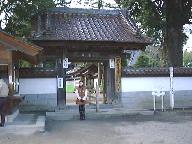 |
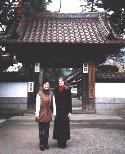 |
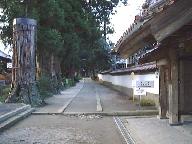 |
Ioji-temple and Sato family
 |
 |
 |
Ioji-temple was built in 826 in Iizaka, Fukushima-shi, and is now known for housing a Buddhist image that protects people against sickness. In the temple are the tombstones of Motoharu Sato, a feudal load, and his family, which is an “Important Prefectural Cultural Asset.
”In 1177, Motoharu Sato built Otori Castle, to the north of the temple. He was a religious man and made Ioji-temple as his family's temple. In feudal times, Japanese political system was strongly connected with the religions.
The temple has a tragic story. Before I talk about the story, I will explain something about Bushi, Japanese warriors.
At the beginning of the 10th century, individual warrior bands called Bushi, who were employed by court nobles as their guardsmen, were gradually becoming powerful.The two most influential Bushi families were the Genji and the Heike.Finally they fought each other for national control.In the middle of the 12th century, the Heike, who defeated the Genji, came to power and established a new government. The Heike enjoyed tremendous prosperity for about 20 years. However, the Genji once again rose in arms against the ruling Heike.
A feudal load, Motoharu Sato, took the side of the Genji during the battle.He had two sons, Tsugunobu and Tadanobu. He ordered them to go to the western part of Japan, to support the Genji.
The first son Tsugunobu was killed at Yashima, in Kagawa prefecture. While the second son, Tadanobu, was also killed in KyotoThey were killed in defense of Yoshitsune, who was a younger brother of the leader of the Genji.
After the battle, Yoshitsune visited Ioji-temple taking the two brother's hair, along with his first vassal Benkei. At that time, Bushi used to offer the hair of the warriors killed in battles to the family's grave. In front of the tombstone, Yoshitsune praised the two brothers' courage offering his sword. For Japanese warriors, Bushi, the sword was thought the most important possession. Benkei offered his bag called Oi. The bag is displayed in the Ioji museum now.
In 1185 the Genji and the Heike fought the last battle at the sea called "Dan-no-ura". The Heike were finally defeated.
About 500 years later, a famous Haiku poet Basho visited the Ioji temple. He was impressed with Sato brothers’ this story, and composed a Haiku.
笈も太刀も五月にかざれ紙のぼり
Oi-mo Tachi-mo Satsuki-ni Kazare
Kami-nobori.
笈(oi) : the bag offered by Benkei / 太刀(tachi) : the sword offered by Yoshitsune / 五月(satsuki) : May / かざれ(kazare) : to decorate / 紙のぼり(kami-nobori) : carp shaped streamer made of paper
This Haiku literally means that you should decorate the bag and sword with paper-made carp-shaped streamers on the Boy's Festival Day.
There is another sad legend with the brothers.
When their mother, Otowa, knew about her son's death, she became depressed. No wonder their two
wives, Wakazakura
and Kaede, felt sad as well.But they tried to encourage their mother-in-law.They
wore Bushi costume and appeared in front of her.Otawa was very surprised and delighted to see
them.Otowa appreciated them for their kindness and warm-hearted attitude. Since then
she could cheer up and recovered her spirit.
Beside the tombstone of the Sato family, there is a camellia tree called “Otowa's camellia.”The flowers of the tree have never bloomed. The flowers have always fallen down when they are buds. So, the tree is called “Never Bloom Camellia Tree.”The buds might imply the two short-lived brothers and Otowa’s sorrow.
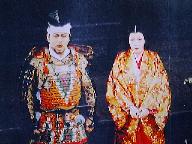 |
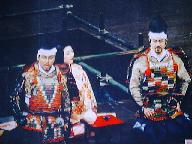 |
Recently the opera "Otowa's
Camellia Tree" was produced and performed in Fukushima-shi. It got great praise and favorable reception as a local-made opera.
(by Mikio & Michiyo)